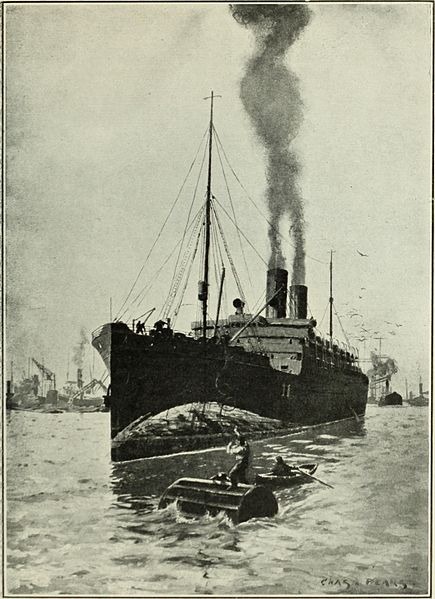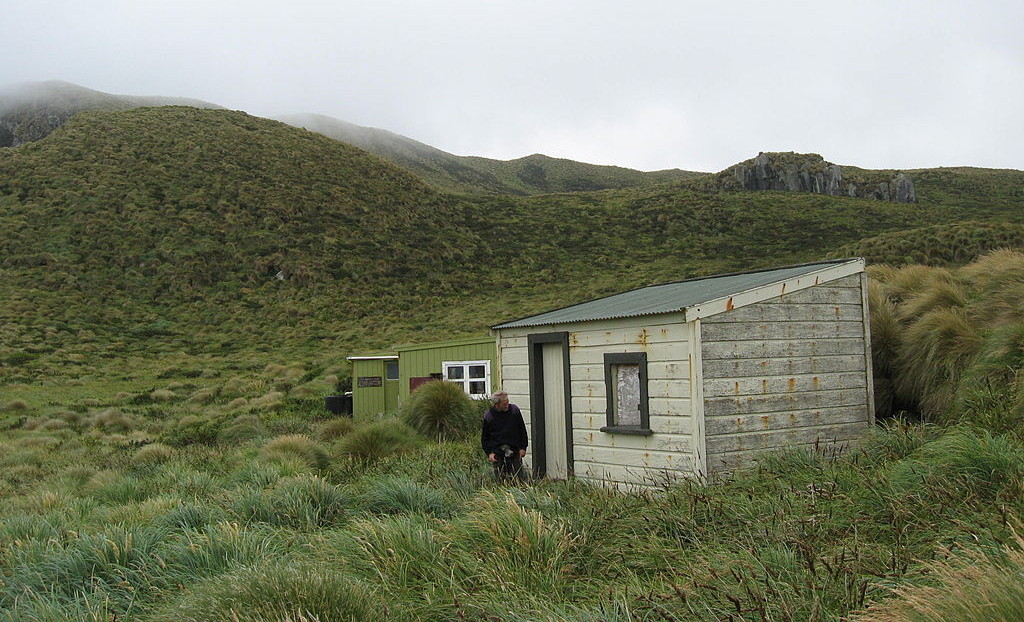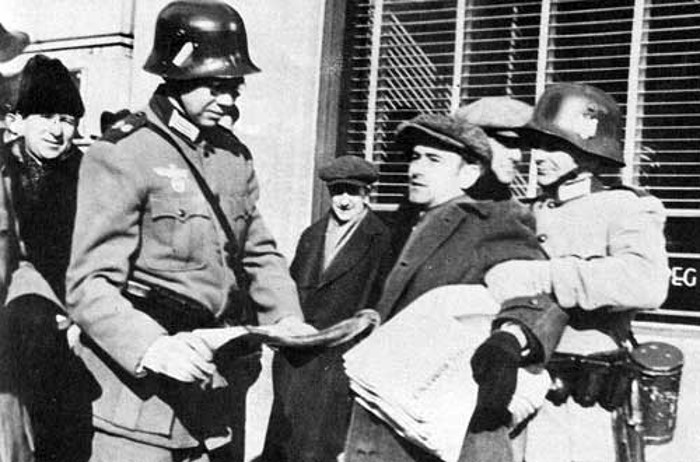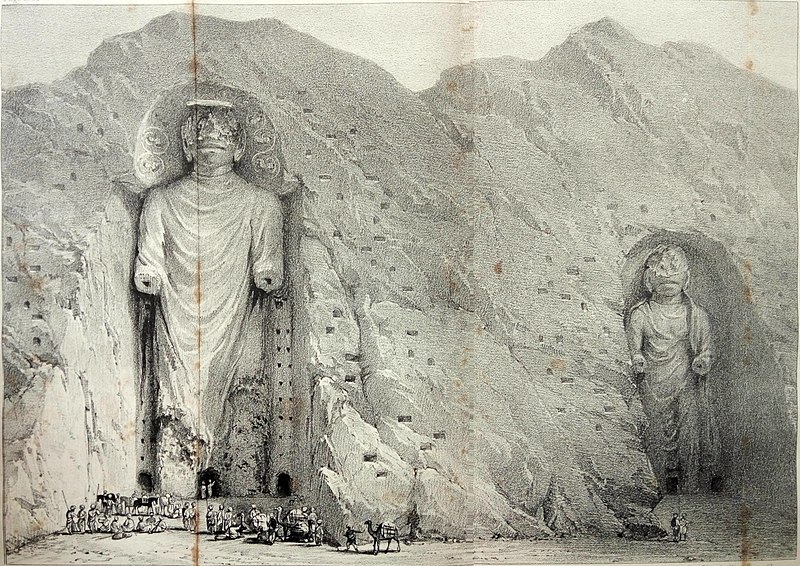In August 2016 artist Patrick Shearn installed a 15,000-square-foot kinetic sculpture overnight in Los Angeles’ Pershing Square. Inspired by schools of fish and murmurations of starlings, Shearn suspended two layers of holographic mylar streamers across the square to make large movements of air visible both to pedestrians and to occupants of the surrounding buildings. He’s followed it up with similar sculptures around the world.
Full Speed Ahead

I just liked this — during World War I, the British painted false bow waves on the sides of their transport ships to deceive German submarines as to their speed.
From The Times History of the War, 1917.
Manly Faces
In studying the attractiveness of human facial features, University of St Andrews psychologist David Perrett found that femininity in female face shape was preferred across cultures and by both men and women. Surprisingly, he found that masculinity in male faces makes them less attractive — in fact, people prefer male faces with a slightly feminized shape. Evaluators said that images of male faces that had been artificially masculinized looked less kind, less emotional, colder, less honest, less cooperative, and less likely to be a good parent. Feminization of male faces had the opposite effect.
This has some basis in real life, where men with more masculine faces show more aggressive and more uncooperative behavior:
Men with masculine face proportions commit more fouls in ice-hockey games and end up with a greater number of time-out penalties than men with more feminine facial proportions. Off the pitch, in an experimental set-up in which players can gain resources, defend them, and steal from others, men with masculine facial proportions choose to retaliate aggressively when other players steal from them and then to steal right back. In contrast, men with feminine facial proportions are more likely to build defences against further infringement. Furthermore, men with high testosterone (that is, those likely to have a masculine facial appearance) have more troubled relationships, and show increased rates of infidelity, violence, and divorce. Masculine males, it seems, are more likely to behave like cads than be good dads.
Men with masculine features do tend to be perceived as stronger and more dominant, and they do tend to be physically strong. Some studies have found a preference for a slight degree of masculinity, but this effect is neither dramatic nor consistent. And “no one has found an overall preference for a high degree of facial masculinity.”
(From Perrett’s 2010 book In Your Face: The New Science of Human Attraction.)
Castaway Depots

Following a series of shipwrecks in the 19th century, the government of New Zealand began to establish huts on remote subantarctic islands for the use of castaways, who otherwise might die of starvation or exposure.
The depots were stocked with firewood, rations, clothing, hunting and fishing equipment, medicine, and matches. Some included boat sheds, and steamers visited each island twice a year. To discourage opportunistic thieves, the government posted warnings on the provisions; one read, “The curse of the widow and fatherless light upon the man that breaks open this box, whilst he has a ship at his back.”
The project was discontinued after about 1927 as radio technology improved and the old clipper route fell out of use, but the depots were proving their value as late as 1908, when 22 crewmembers from the French barque President Félix Faure were shipwrecked in the Antipodes Islands. A depot there helped to sustain them until they could signal a passing warship.
Unquote

“It has always puzzled me that so many religious people have taken it for granted that God favors those who believe in him. Isn’t it possible that the actual God is a scientific God who has little patience with beliefs founded on faith rather than evidence?” — Raymond Smullyan
Centrists

The Cook pine, Araucaria columnaris, leans toward the equator. In 2017 botanist Matt Ritter of California Polytechnic State University noticed that pines growing in California and Hawaii leaned south; he called a colleague in Australia, who reported that the trees there leaned north.
“We got holy-smoked that there’s possibly a tree that’s leaning toward the equator wherever it grows,” Ritter told Nature.
In both hemispheres, the trees lean more sharply the farther they are from the equator. The average incline is 8 degrees, but one tree in South Australia leans 40 degrees.
The reason isn’t clear; it “may be related to an adaptive tropic response to the incidence angles of annual sunlight, gravity, magnetism, or any combination of these,” the authors write. But “It’s a shockingly distinct pattern,” Ritter said.
See Beef Tack.
(Jason W. Johns et al., “Worldwide Hemisphere-Dependent Lean in Cook Pines,” Ecology 98:9 [2017], 2482-2484.)
Take 5
An interesting problem from Crux Mathematicorum, March 2004: The increasing sequence 1, 5, 6, 25, 26, 30, 31, 125, 126, … consists of positive integers that can be formed by adding distinct powers of 5. That is, 1 = 50, 5 = 51, 6 = 50 + 51, and so on. What’s the 75th integer in this sequence?
Active and Passive

[The British pub] is the only kind of public building used by large numbers of ordinary people where their thoughts and actions are not being in some way arranged for them; in the other kinds of public building they are the audiences, watchers of political, religious, dramatic, cinematic, instructional or athletic spectacles. But within the four walls of the pub, once a man has bought or been bought his glass of beer, he has entered an environment in which he is a participator rather than a spectator.
— Tom Harrisson, The Pub and the People, 1943
Podcast Episode 286: If Day

In 1942, Manitoba chose a startling way to promote the sale of war bonds — it staged a Nazi invasion of Winnipeg. For one gripping day, soldiers captured the city, arrested its leaders, and oppressed its citizens. In this week’s episode of the Futility Closet podcast we’ll describe If Day, which one observer called “the biggest and most important publicity stunt” in Winnipeg’s history.
We’ll also consider some forged wine and puzzle over some unnoticed car options.
So There

Exploring the caves above the 53-meter statue of Gautama Buddha in the Bamyan valley of Afghanistan in the 1930s, a French archaeological delegation found this message scrawled on a wall:
If any fool this high samootch explore
Know Charles Masson has been here before.
